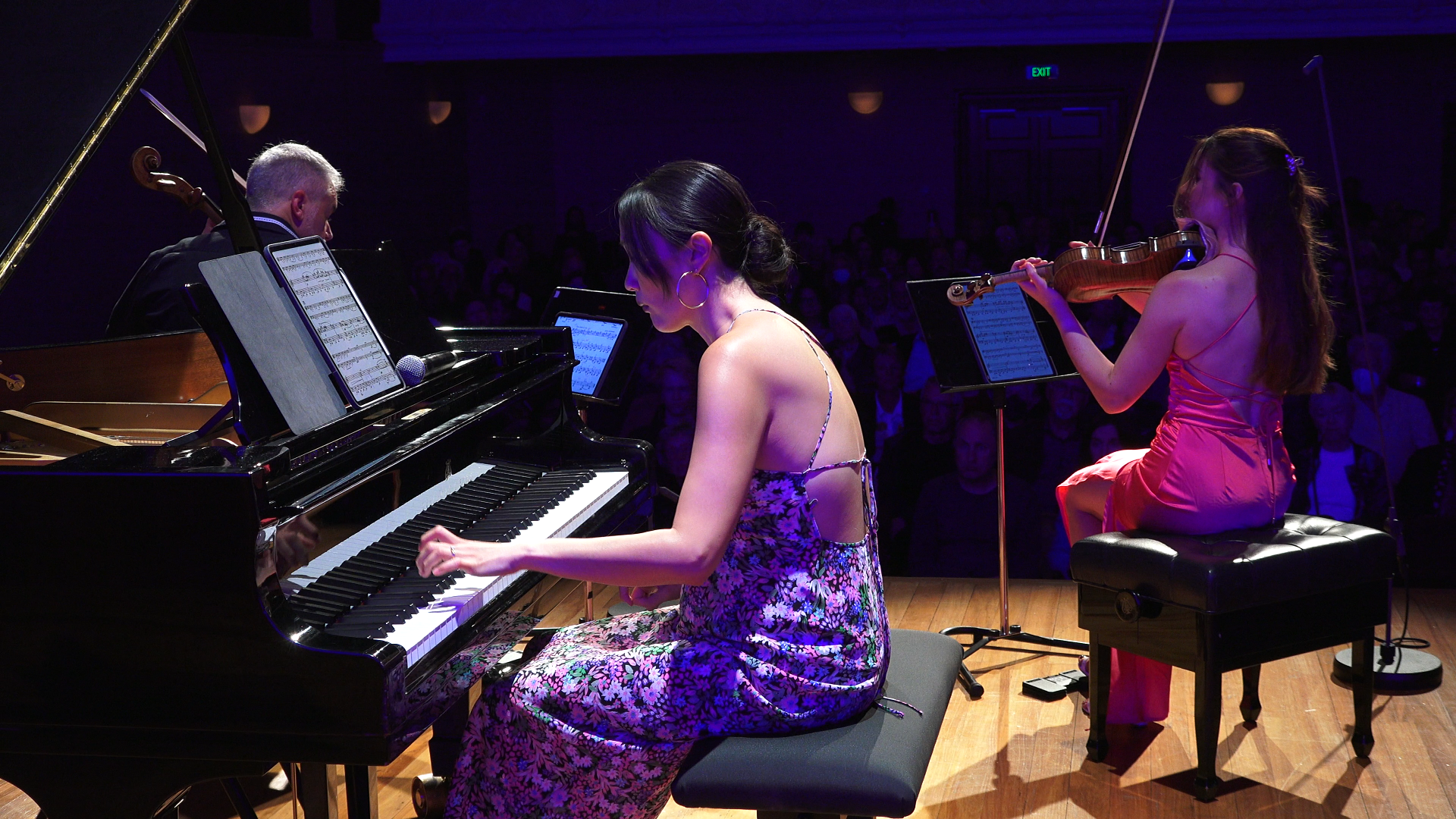Gallipoli Fragments for Piano Trio (2015) – c. 27′
The Triumvirate (2006) – c. 4′
Gallipoli Fragments for Piano Trio (2015) – c. 27′
The Triumvirate (2006) – c. 4′
Gallipoli Fragments for Piano Trio (Fixed Media and Images)
Introduction and Enlist – The Landing – The Turkish Attack – Abide With Me – The Maori Contingent – The Nek – Çanakkale – Ataturk’s words and Ending
This incredible work brings Gallipoli directly to the theatre of the modern day. Chris has quite some experience there: he made his first visit in 1994, and was the driving force behind the trio’s visit to the 2012 Asian Composers Festival in Izmir. In the meantime, he took an entire sabbatical year to work on his Pilgrimage to Gallipoli, and this new work, in eight continuous sections, fuses elements of that recorded sound with stunning images from both sides and new acoustic music for the trio – sometimes in distinct melodies, sometimes more abstract, always in a variety of textures to allow the media to come through. He describes his first experience there:
“From Istanbul, it’s a six-hour bus journey to Çanakkalle, the major town near the battlefield, and the name by which the Turks refer to the war. Amid the cacophony of ticket sellers at the Istanbul Bus Station were other, more familiar accents… and this was the start of an extraordinary journey. Landmarks such as Çanak Bair, the Nek, Walker’s Ridge, Baby 700, Courtney’s Post and Shrapnel Valley became real places for me… and despite the peaceful calm of the present-day battlefields set against the glittering Aegean Sea, it was not too difficult to imagine the miserable conditions under which the youthful soldiers fought so courageously. The horrific relics in the museum, the endless discussions on various aspects of the campaign, and particularly the services and ceremonies were powerful and emotional experiences – experiences I will never forget… a glimpse of the true horror and tragedy of those nine months back in 1915 sank in….”
‘God Save the King’ and the National anthems of Austria and Serbia illustrate the Introduction and Enlist, with recruitment posters and the shooting of the Archduke leading quickly into The Landing, 25 April, 1915. On 19 May comes The Turkish Attack, a massive force of 40,000 that was trying to push the Anzacs back out to sea, with searing imagery that also shows the humanity and growing respect between the two sides. The piano starts in on the hymn ‘Abide With Me‘ while the strings play the popular tune ‘There is a Rose in No Man’s Land’, all intertwined with the Muslim Call to Prayer. The pictures take centre-stage in The Maori Contingent, which leads in Advance Australia Fair to focus on the Australians’ attack at the Nek. The recruitment posters return in a more gruesome, ironical setting. The drama and violence is undercut by a simple Turkish folk song in Çanakkale, unbearably poignant: and finally, the Turkish national anthem heralds Ataturk’s words and Ending, with media and trio combined, and the words that Ataturk addressed to the first visitors to Gallipoli, April 25, 1934.
Çanakkale
In Çanakkale stands the Mirror Bazaar.
Mother I set forth against the enemy, oh, my youth, alas!
In Çanakkale there’s a cypress tree.
Some of us are engaged, some of us married, oh, my youth, alas!
In Çanakkale there’s a broken jug.
Mothers and fathers abandoned hope, oh, my youth, alas!
Çanakkale’s heights are shrouded with smoke.
The thirteenth division marched to war, oh, my youth, alas!
In Çanakkale the cannonballs landed.
Ah, our comrades fell wounded together, oh, my youth, alas!
Çanakkale’s bridge is narrow, impassable.
Its waters have become red blood, not a cup can be drunk, oh, my youth, alas.
From Çanakkale I barely escaped
My lungs rotted from vomiting blood, oh, my youth, alas!
From Çanakkale I escaped, my head is safe
Doomsday came before I reached Anafarta, oh my youth, alas
In Çanakkale they shot me.
They buried me before I died, oh, my youth, alas!
In Çanakkale are rows of willows
Brave lions rest beneath them, oh, my youth, alas.
Please note: This work commemorates New Zealand’s involvement in Gallipoli and contains photographic images of war time which may disturb some people.
Special thanks to John Chrisstoffels who edited the images. Sources: Alamy Archives New Zealand Australian War Museum Auckland Museum National Army Museum National Library of New Zealand Puki Ariki Ben Talman
The Triumvirate
Chris writes: “This commission called for something short, energetic and dynamic. When writing the initial sketches for the work, it occurred to me that the musical phrases seemed to imitate the shape of vocal inflections that might occur when three people were having a heated discussion – the same sort of heated argument that might ensue when three strong personalities were given equal authority over the same area of responsibility. I built upon this concept when writing the work, and settled on a title that might reflect a situation when such a quarrel could possibly arise.”

